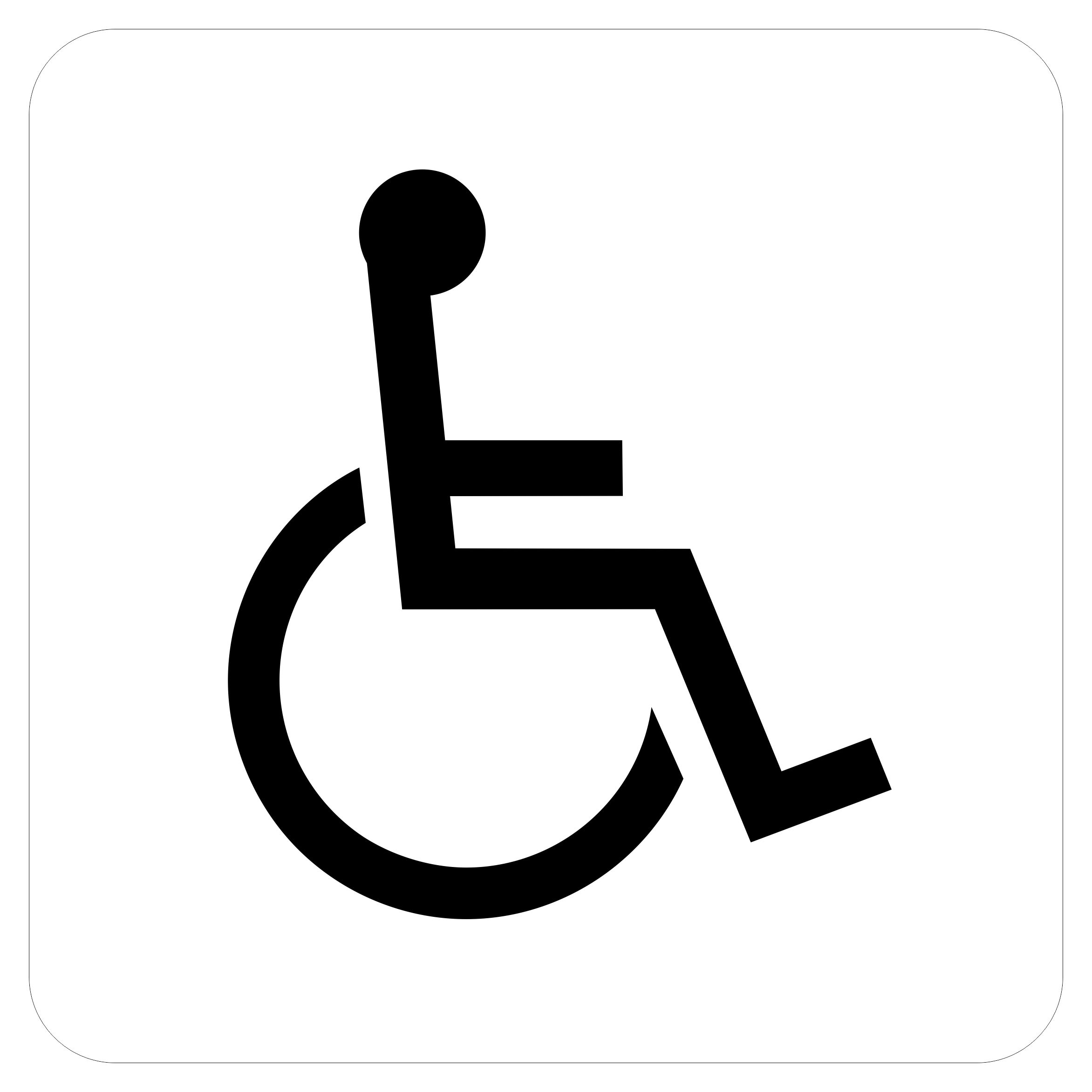Recognizing the Rules Behind ADA Signs
Recognizing the Rules Behind ADA Signs
Blog Article
Discovering the Secret Functions of ADA Signs for Enhanced Availability
In the world of access, ADA indications work as silent yet effective allies, making sure that rooms are navigable and comprehensive for individuals with impairments. By incorporating Braille and responsive elements, these indicators damage obstacles for the aesthetically impaired, while high-contrast color pattern and legible typefaces accommodate varied visual demands. In addition, their strategic positioning is not arbitrary however rather a computed effort to assist in seamless navigation. Yet, past these features exists a much deeper story concerning the evolution of inclusivity and the continuous commitment to producing fair areas. What much more could these indications symbolize in our pursuit of universal accessibility?
Importance of ADA Conformity
Making certain compliance with the Americans with Disabilities Act (ADA) is critical for cultivating inclusivity and equivalent gain access to in public rooms and work environments. The ADA, established in 1990, mandates that all public centers, companies, and transport solutions accommodate people with handicaps, ensuring they take pleasure in the exact same rights and opportunities as others. Compliance with ADA standards not only meets lawful obligations yet likewise boosts a company's credibility by showing its commitment to variety and inclusivity.
One of the essential aspects of ADA conformity is the execution of accessible signage. ADA indicators are created to make sure that people with handicaps can easily navigate through structures and spaces.
Moreover, adhering to ADA guidelines can alleviate the danger of legal effects and possible fines. Organizations that stop working to adhere to ADA standards may face penalties or lawsuits, which can be both harmful and economically troublesome to their public image. Therefore, ADA conformity is essential to promoting an equitable atmosphere for every person.
Braille and Tactile Components
The consolidation of Braille and tactile elements into ADA signage symbolizes the concepts of ease of access and inclusivity. These attributes are essential for people that are blind or visually damaged, allowing them to navigate public spaces with higher independence and confidence. Braille, a responsive writing system, is essential in offering created details in a layout that can be conveniently viewed via touch. It is generally put underneath the equivalent message on signs to guarantee that individuals can access the details without aesthetic aid.
Tactile components prolong past Braille and include increased symbols and personalities. These components are designed to be discernible by touch, allowing individuals to identify room numbers, washrooms, leaves, and other essential locations. The ADA sets particular guidelines regarding the size, spacing, and placement of these responsive aspects to optimize readability and make sure uniformity throughout various environments.

High-Contrast Color Systems
High-contrast shade systems play an essential function in boosting the presence and readability of ADA signs for people with aesthetic problems. These systems are important as they make the most of the difference in light reflectance between message and background, making certain that indications are quickly noticeable, even from a range. The Americans with Disabilities Act (ADA) mandates making use of particular shade contrasts to suit those with minimal vision, making it an essential facet of conformity.
The efficacy of high-contrast shades depends on their capability to stand apart in various illumination problems, consisting of poorly lit atmospheres and locations with glow. Typically, dark text on a light history or light text on a dark background is utilized to attain optimal contrast. For example, black text on a white or yellow history supplies a stark visual difference that assists in fast recognition and understanding.

Legible Fonts and Text Dimension
When considering the style of ADA signs, the option of understandable typefaces and proper text size can not be overstated. These components are critical for making sure that indicators are easily accessible to people with visual disabilities. The Americans with Disabilities Act (ADA) mandates that typefaces must be not italic and sans-serif, oblique, script, extremely ornamental, or of uncommon kind. These demands aid make certain that the message is conveniently readable from a distance and that the characters are appreciable to diverse audiences.
The dimension of the text also plays a pivotal duty in availability. According to ADA standards, the minimum text height should be 5/8 inch, and it needs to click here for info enhance proportionally with watching range. This is specifically essential in public rooms where signage demands to be read swiftly and properly. Consistency in text dimension adds to a natural visual experience, aiding people in navigating environments successfully.
Additionally, spacing in between lines and letters is indispensable to clarity. Ample spacing prevents characters from appearing crowded, enhancing readability. By adhering to these standards, designers can dramatically boost availability, making sure that signage offers its intended purpose for all people, no matter their visual capabilities.
Effective Positioning Approaches
Strategic positioning of ADA signage is necessary for making the most of accessibility and making sure conformity with their website lawful standards. Effectively located indicators guide individuals with disabilities successfully, promoting navigating in public areas. Trick considerations include closeness, height, and presence. ADA standards stipulate that indicators must be installed at a height in between 48 to 60 inches from the ground to guarantee they are within the line of view for both standing and seated people. This common elevation variety is crucial for inclusivity, making it possible for mobility device users and individuals of varying heights to accessibility information effortlessly.
Additionally, indications have to be put beside the latch side of doors to permit simple identification before access. This positioning aids people find areas and areas without blockage. In cases where there is no door, signs ought to be situated on the nearest adjacent wall surface. Consistency in indicator positioning throughout a center enhances predictability, decreasing complication and boosting total customer experience.

Verdict
ADA indications play an important role in advertising access by incorporating attributes that deal with the requirements of people with impairments. Integrating Braille and tactile aspects guarantees crucial information is obtainable to the visually damaged, while high-contrast color design and legible sans-serif typefaces boost presence throughout numerous lights conditions. Effective positioning approaches, such as ideal installing heights and critical areas, better assist in navigating. These elements jointly promote an inclusive atmosphere, highlighting the value of ADA compliance in guaranteeing equal gain access to for all.
In the realm of availability, ADA indications serve as silent yet effective allies, making sure that rooms are navigable and inclusive for individuals with handicaps. The ADA, established in 1990, mandates that all public centers, companies, and transportation services accommodate people with specials needs, ensuring they delight in the very same legal rights and chances as others. ADA Signs. ADA signs are created to guarantee that individuals with specials needs can quickly browse through areas and structures. ADA standards state that signs ought to be placed at a height between 48 to 60 inches from the ground to guarantee they are within the line of view for both standing and seated individuals.ADA indicators play a crucial duty in advertising ease of access by integrating functions that attend to the needs of people with specials needs
Report this page